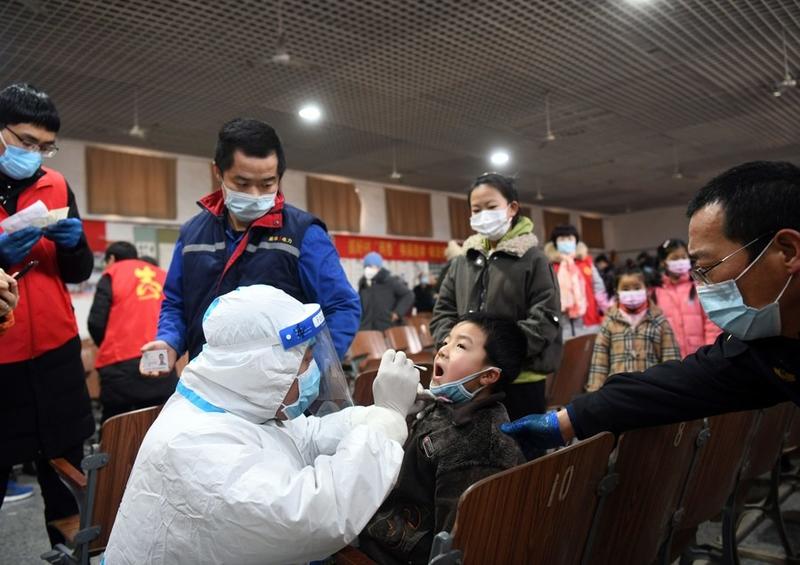 A medical worker collects a swab sample from a child at a COVID-19 testing site in Baiwangzhuang Village of Jingxing County, Shijiazhuang, capital of north China's Hebei province, Jan 20, 2021. (Jin Liangkuai / XINHUA)
A medical worker collects a swab sample from a child at a COVID-19 testing site in Baiwangzhuang Village of Jingxing County, Shijiazhuang, capital of north China's Hebei province, Jan 20, 2021. (Jin Liangkuai / XINHUA)
BEIJING - China has ramped up epidemic prevention and control efforts in its rural areas to cope with the heightened transmission risk that comes with the mass migration during the upcoming Spring Festival holiday season.
People who are directly from areas with medium or high infection risks are not allowed to migrate in principle
People must produce a negative result on a COVID-19 test taken within seven days before returning to rural areas for family reunions, said an official document posted online on Wednesday by the National Health Commission.
Documentation or a health QR code that contains such a test result must be presented to the local village committee upon arrival, it added.
Such travelers then need to observe a 14-day home quarantine, monitoring their body temperature and guarding against any symptom of COVID-19. During the 14-day quarantine period, they need to take a COVID-19 test every seven days.
They are urged to avoid unnecessary gatherings or local travel during their stay in rural areas and take proper hygiene and self-protection measures when they have to venture out.
ALSO READ: Over 15m COVID-19 vaccine doses administered in China
The requirement applies to all trans-provincial travel as well as intra-provincial travel undertaken by people from prefectures or cities that administer areas with medium or high infection risks and those whose work involves handling imported frozen goods, among other groups with higher risks of exposure to the virus.
People who are directly from areas with medium or high infection risks are not allowed to migrate in principle.
The new rules will be in effect during the official period of the Spring Festival travel rush, which runs from Jan 18 to March 8.
An estimated 1.7 billion passenger trips will be made during the travel rush.
China has recently reported clusters of cases in multiple regions, the majority of which broke out in rural areas.


